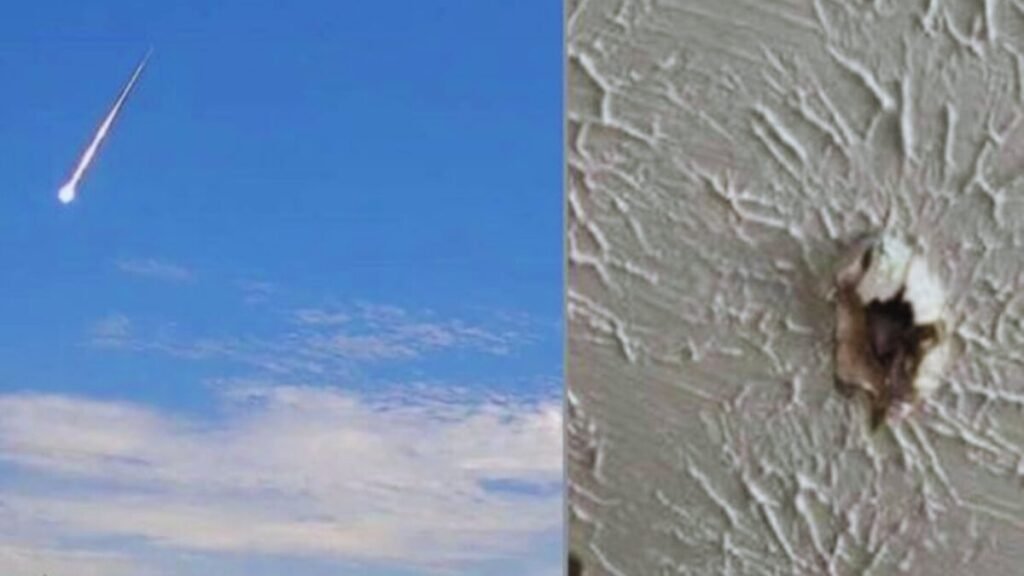Visitor Older Than Earth: The Story of the Meteorite that Crashed through a Roof in Georgia

The scene seemed straight out of a science fiction novel: a flash in the sky, a loud bang, and seconds later. What appeared to be an isolated accident soon became a connecting present with the origins of the solar system, revealing as rare as it is revealing.
## The impact that surprised McDonough

McDonough, a city southeast of Atlanta, witnessed a rare phenomenon. A meteorite, visible as a bright fireball in several states, pierced the atmosphere at over a kilometer per second before penetrating a home’s roof, ventilation ducts, and part of the floor.
The meteorite, which fragmented upon impact, left a crater in the pavement and covered the room in cosmic dust, a residue so fine that the homeowner continues to find particles days later. There were no injuries, but a story that quickly caught the attention of the public.
## A relic from before Earth

Analyses conducted by the University revealed that it is an ordinary L-type chondrite, formed about 4.56 billion years ago, surpassing the age of our planet.
Planetary geologist Robert Scott Harris and his team examined 23 grams of the recovered fragments using optical and electron microscopy, determining that this rocky material, with low metal content.
## A journey forged in cataclysm

Points to a dramatic origin: a catastrophic event that occurred 470 million years ago in the asteroid belt between Mars and Jupiter. From that collision emerged fragments that, after wandering for millions of years, coincided with Earth’s orbit.
At the speed it fell, Harris compared it to traversing ten football fields in a second, enough to pulverize some of the material into microscopic dust.
## Science, prevention, and legacy
The twenty-seventh meteorite recovered in Georgia and the sixth whose fall has been witnessed, provides key data to understand the primitive solar system. Harris emphasizes that studying these objects is vital to prevent future impacts on a larger scale.
Some of the fragments will be preserved at the University of Georgia for future research, while others will be exhibited at the Tellus Science Museum in Cartersville, reminding us that the universe’s past can break into our present at any moment.






